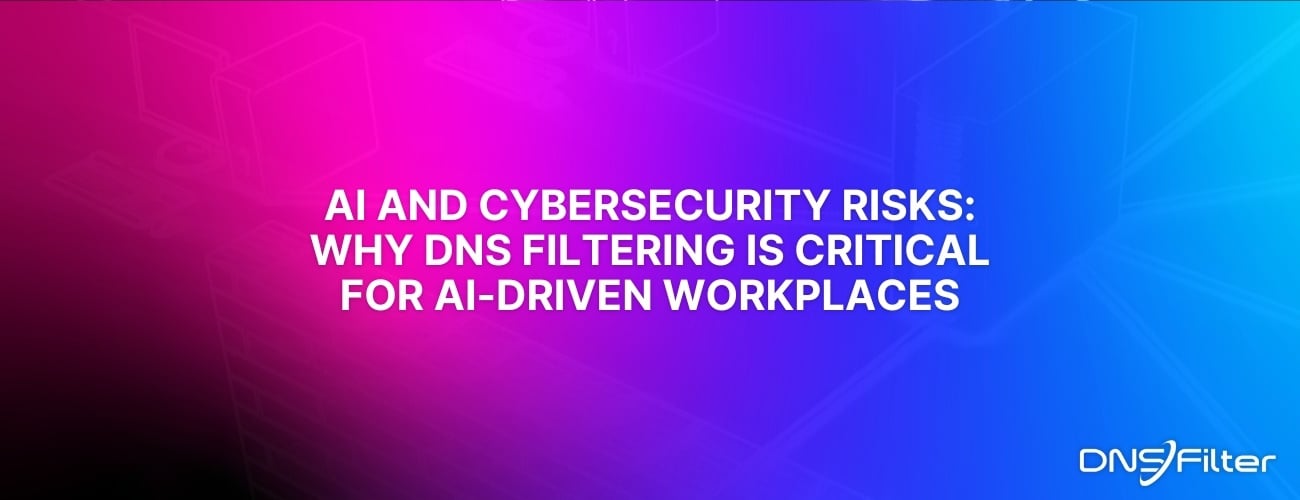Share this
The DNS-Based Threats Your Firewall Ignores
by Mikey Pruitt on Feb 13, 2025 6:11:43 PM
Your firewall is working hard… but not smart. And cybercriminals love that.
Like a bouncer at the club with a clipboard—great at stopping the obvious troublemakers that aren’t on the list, but completely oblivious to unknown threats. They excel at blocking unauthorized access through known ports and protocols, but they often overlook a critical vulnerability: DNS traffic and what’s on the other side of a link. This oversight allows cybercriminals to exploit the Domain Name System to bypass traditional security measures.
DNS-based attacks trick unsuspecting humans, enabling attackers to stealthily exfiltrate data or establish command and control channels without detection.
Traditional firewalls often fail to recognize these covert operations.
The worst part? Your firewall updates too slowly to keep up, leaving a critical gap that attackers exploit. Even when vulnerabilities are identified, the window between discovery and patch deployment can be significant. Attackers are well aware of these delays and actively exploit them.
Top Threats Your Firewall Is Missing
Update Delays: The Silent Vulnerability
Firewalls rely on regular updates to recognize and block new threats. However, delays in applying these updates can leave systems exposed. Attackers exploit these windows of vulnerability, launching attacks before defenses are reinforced. Regular maintenance and timely updates are crucial to ensure firewalls remain effective against emerging threats.
Command and Control (C2) Communications: Malware’s Secret Lifeline
Malware often uses DNS to communicate with its creators, receiving new instructions while staying undetected. Firewalls see harmless-looking DNS traffic and let it pass without question. This allows attackers to pivot, escalate privileges, and spread laterally across networks.
Domain Generation Algorithms (DGAs): The Hydra of Cyber Attacks
Attackers create hundreds of randomized domains per day to evade blocklists. By the time security vendors detect and block one, the attacker has already moved to another. Firewalls can’t keep up because they rely on outdated domain blocklists.
DNS Hijacking & Cache Poisoning: Redirecting You to the Danger Zone
Attackers manipulate DNS records to send users to phishing sites or malware-laden pages. Users think they’re logging into their bank or company portal—but they’re actually handing credentials to hackers. Firewalls don’t check where DNS requests are going, just that they’re allowed to leave.
Lookalike Domains & Phishing: The Digital Impersonators
Attackers create visually identical domains to trick users into entering credentials. Example: faceb00k[.]com instead of facebook[.]com—looks legit until it’s too late. Firewalls don’t scan domain reputations, so they let these malicious lookalikes through.
These threats exploit the blind spots in traditional firewall defenses, emphasizing the need for comprehensive DNS security measures.
How to Protect Against DNS-Based Threats
You don’t need a better firewall—you just need to fill the security holes.
1️⃣ Deploy Protective DNS Filtering
Implementing protective DNS filtering is crucial to stop malicious DNS requests before they reach your network. By analyzing and categorizing domains in real-time, DNS filtering solutions can block access to known malicious sites, preventing threats like malware, phishing, and ransomware. This proactive approach ensures that harmful domains are inaccessible to users, enhancing overall security.
2️⃣ Use Real-Time Threat Intelligence
Leveraging real-time threat intelligence is essential to stay ahead of fast-evolving cyber threats. Advanced DNS filtering solutions utilize machine learning and AI-driven threat detection to identify and block malicious domains before they pose a risk. This dynamic analysis allows for the detection of zero-day threats and rapidly changing malicious domains, providing a robust defense against emerging attacks.
3️⃣ Monitor DNS Traffic for Anomalies
Regularly monitoring DNS traffic for unusual patterns can help identify potential threats such as DNS tunneling or command and control (C2) communications. Anomalies like unexpected spikes in DNS queries or connections to uncommon domains may indicate malicious activity. By analyzing DNS traffic, organizations can detect and respond to threats that might bypass traditional security measures.
4️⃣ Block Newly Registered Domains by Default
Many malicious campaigns utilize newly registered domains to evade detection. Blocking access to domains that have been recently registered can reduce the risk of encountering malicious sites. Protective DNS solutions often offer the capability to automatically block these new domains, adding an extra layer of security against emerging threats.
5️⃣ Adopt a Zero-Trust DNS Strategy
Embracing a zero-trust approach to DNS means assuming that all DNS traffic is potentially malicious until verified. This strategy involves strict verification processes and continuous monitoring to ensure that only legitimate DNS requests are allowed. By implementing zero-trust principles, organizations can minimize the risk of DNS-based attacks and enhance their overall security posture.
The Bottom Line: Firewalls Are Good, But Not Good Enough
Cybersecurity requires a layered approach and no single solution is going to fully protect you from every threat. So while traditional firewalls are essential for network security, they have a significant blind spot: DNS traffic.
Traditional firewalls primarily operate on a reactive basis, identifying and mitigating threats based on known signatures and predefined rules. This approach often leaves networks vulnerable to new or evolving threats that haven't yet been cataloged. In contrast, DNSFilter offers a proactive defense strategy by analyzing and categorizing domains in real-time, effectively blocking access to malicious sites before they can infiltrate your network. This proactive stance ensures that threats are neutralized at the DNS layer, preventing potential harm before it reaches your systems.
The solution isn't merely adding more rules to your existing firewall. Instead, implementing DNS-layer security complements your firewall by providing proactively monitoring and filtering DNS traffic. This approach can block access to malicious domains, prevent data exfiltration, and stop command-and-control communications used by malware.
Don’t assume your firewall has you covered. Try DNSFilter free for 14 days.
Share this
 Artificial Intelligence in Cybersecurity
Artificial Intelligence in Cybersecurity
The term “artificial intelligence (AI)” was first coined in 1956. While progress stalled for many years, we can thank IBM for sparking real interest in AI as viable technology: First in 1997 when the computer Deep Blue defeated a chess champion and again in 2011 when Watson won Jeopardy!
 The Mind Games Behind Cyber Attacks
The Mind Games Behind Cyber Attacks
Hackers have long understood that the most sophisticated firewall is no match for a well-placed psychological trick. While many focus on the technical prowess of cybercriminals, the real magic often lies in their ability to manipulate human behavior. By exploiting our natural tendencies and cognitive biases, hackers can slip past even the most robust security systems. It's not just about cracking codes; it's about cracking the human psyche.
 AI and Cybersecurity Risks: Why DNS Filtering is Critical for AI-Driven Workplaces
AI and Cybersecurity Risks: Why DNS Filtering is Critical for AI-Driven Workplaces
Artificial intelligence is transforming business operations, automating everything from customer service to data analysis. But with these advancements come new security challenges. AI-driven cyber threats are becoming more sophisticated, enabling attackers to automate phishing campaigns, generate malware, and exfiltrate sensitive data at scale. Without proper safeguards, AI tools can unintentionally leak corporate secrets or connect to malicious ...


